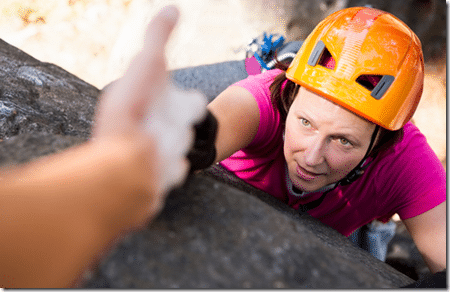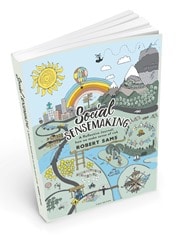Helping in Safety

For example, contrast the often controlling practices of Safety with the helping activity of being alongside someone who has lost a parent, a friend, a partner or a neighbour to suicide, and it’s not hard to see how counselling really has no choice but to help. There are no fixes to offer when you are attending to someone who has such experiences.
While I do suppose that many people working in Safety really do want to help, it’s almost impossible to escape its policing ways when you are stuck in the middle of it. So, I thought it may be useful in this piece to explore the following questions that may assist with more helping in safety;
What does it mean to help? Who are we trying to help? Who are we as a helper? How do we go about helping?
Let’s begin.
What does it mean to help?
I recently had the privilege of participating in the recruitment of Counsellors for an organisation that truly is a helping one. The interviews were for volunteers and there was a mix of candidates; including those who had completed formal training and were looking for the opportunity to put their skills into practice, as well as more experienced people seeking to be in community with others as they go about helping.
The method of interview was role playing, where the ‘recruits’ were asked to participate in a number of different scenario’s. It was my role to play the part of ‘client’ (or as I prefer, a ‘person’, seeking help from another). While the would-be helpers demonstrated how they go about such activity, I was treated to an opportunity to learn.
As I sat there in character, playing the (fictitious) role of someone seeking help with a challenge in my relationship, the care and compassion from the practicing Counsellors impacted me; I felt it. These are people whose work allows them to demonstrate empathy. The best counsellors seem to do this intuitively, it’s in their very nature. They are not fixers (although that would be such a tempting path to travel down when faced with people in crisis), instead, good counsellors allow silence, and recognise the importance of people in pain having to wrestle in the mud. They accept fallibility, rather than deny it. Helping involves reflective listening and attending, this allows the person to explore feelings. Helping means considering others while suspending our own agenda, something that is counter-intuitive when your work demands you fix. It’s hard to help when you’re stuck in checking, policing and controlling.
Who are we trying to help?
As noted above, one of the things that I reflect on in the counselling profession is that of labels (e.g. ‘clients’). While I do accept that it is the common language in the Counselling profession, I’m also challenged by it. I understand why this term is used as there is a potential power differential at play between the ‘Counsellor’ and ‘Client’, and applying these labels may assist in attenuating such power through creating boundaries. However, I also understand this paradoxically, in that the more that this differential is highlighted or confirmed, the greater the chance that the relationship may move away from a human to human contact, and become more clinical. We know through social psychology though, that the more we apply labels to people, the greater the chance that we may see them as an object to be studied, rather than a person to be met. It is this paradox that Counsellors must contend with if their aim is to meet others at a time of need. How may they do this?
One ‘technique’ adopted by some of the would-be counsellors, as I was sharing the (fictitious) story about my troubled relationship, was to ask what my partners name was. This was not for the purpose of completing a box on a form, it was to make the discussion more human. Such discussions are so easily made clinical and distant when they are about objects, however, as I’ve previously written about in referring to the work of Patch Adams, when we ask for a person’s name, the conversation moves more easily into one between subjects rather than objects. So, to answer the question of who are we trying to help, the answer in counselling is; another human being. In Safety, perhaps it’s harder to recognise this when forced to focus on compliance with process?
Who are we as a helper?
This is blog will be published on a site frequented by many who work in the fields of Risk and Safety. Wanting to help is something that we often, almost desperately, hear from people working in these fields as they struggle with the tension between objects and subjects. The talk is often of protecting; from harm, injury and illness, yet the activities regularly the opposite. It is challenging to work in Safety day after day dealing with this tension.
But is it any wonder, especially when we think about the focus of learning in Safety when compared to Counselling? While I don’t intend to digress in this article by commenting at length on the curriculum in Safety as this has been done in much detail elsewhere (https://safetyrisk.net/isnt-it-time-we-reformed-the-whs-curriculum/), I have included below a comparative table between subjects offered in a standard Diploma of Counselling compared against the subjects studied in a Diploma of Work Health and Safety (in Australia).
| Diploma of Counselling | Diploma of Work Health and Safety
https://www.swinburne.edu.au/study/course/diploma-of-work-health-and-safety/ |
| Unit 1 – The Counselling Relationship
Unit 2 – Communication and the Counselling Interview Unit 3 – Supportive Decision Making Unit 4 – Personality and Development Theories Unit 5 – Learning Theories Unit 6 – Introduction to Counselling Theories Unit 7 – Cognitive Behavioural Therapy Unit 8 – Solution Focused Therapy Unit 9 – Acceptance and Commitment Therapy (ACT) Unit 10 – The Counselling Process Unit 11 – Brief Interventions Unit 12 – Loss and Grief Support Unit 13 – Case Management and Counselling for Individualised Support Unit 14 – Counselling and Mental Health Unit 15 – Legal and Ethical Issues Unit 16 – Counselling and Crisis Unit 17 – Diversity and Counselling Unit 18 – Counselling and Personal Reflection |
Cluster 1: Managing WHS Risk
· Contribute to the systematic management of WHS risk (BSBWHS503) · Manage WHS risks (BSBWHS504) · Facilitate the development and use of WHS risk management tools (BSBWHS509) Cluster 2: Managing WHS Quality Systems · Contribute to developing, implementing and maintaining WHS management systems (BSBWHS506) · Contribute to managing WHS information systems (BSBWHS507 · Manage effective WHS consultation and participation processes (BSBWHS502) Cluster 3: Investigating and Reporting WHS Incidents · Write complex documents (BSBWRT401) · Investigate WHS incidents (BSBWHS505) Cluster 4: Manage rehabilitation or return to work programs · Manage rehabilitation or return to work programs (BSBHRM509 |
Note the order of the topics studied. In Counselling, the first five subjects are about people and relationships. In Safety, we learn first of systems, objects and tools.
How do we go about helping?
Now that we have considered what it means to help, about who we are helping and understood ourselves as helpers, let’s now consider how we go about helping.
If we continue to use the comparison between Counselling and Safety, a starting point in understanding how Safety sees its role is to consider the work of its peak body in Australia, the Safety Institute of Australia, through its Book of Knowledge, which lists the following core activities that OHS professionals should be able to do:
· Interpretation and application of specific legislation
· Evaluation and application of recognised models and tools (e.g. standards AS/NZS 4801, ISO 31000)
· Application of the Risk Management process
· Provision of advice and support for development, implementation and maintenance of OHS management approaches
· Evaluation of OHS performance (includes use of statistics)
· Auditing and compliance assurance
· Investigation
· Training
· Safety and health promotion
Source: SIA OHS Body of Knowledge (2012) accessed here http://www.ohsbok.org.au/wp-content/uploads/2013/12/38-Practice-Model-of-practice.pdf?x71776 on 25th February 2018
*Note: While I do acknowledge that the SIA BoK is more extensive than the list above and it does include references to professional and ethical practices as well as to communication and mentoring, a quick glance at the Table of Contents of the BoK confirms that the focus is really on understanding and managing ‘things’ rather than people.
By contrast, the Australian Counselling Association’s Code of Ethics and Practice outlines a different set of practices for ‘helping’ when it outlines that:
“The helping relationship constitutes the effective and appropriate use of helper’s skills that are for the benefit and safety of the client in his or her circumstances. Therefore, as members (regardless of level) of the Australian Counselling Association we will:
· Offer a non-judgmental professional service, free from discrimination, honouring the individuality of the client
· Establish the helping relationship in order to maintain the integrity and empowerment of the client without offering advice.
· Be committed to ongoing personal and professional development
· Ensure client understanding of the purpose, process and boundaries of the counselling relationship.
· Offer a promise of confidentiality and explain the limits of duty of care.
· For the purpose of advocacy, receive written permission from the client before divulging any information or contacting other parties.
· Endeavour to make suitable referral where competent service cannot be provided.
· Undertake regular supervision and debriefing to develop skills, monitor performance and sustain professional accountability.
· Be responsive to the needs of peers and provide a supportive environment for their professional development
· Not act as or practice legal counsel on behalf of or to a client when practicing as a counsellor or act as an agent for a client
· Not initiate, develop or pursue a relationship be it sexual or nonsexual with past or current clients, within 2 years of the last counselling session.
· Be responsible for your own updating and continued knowledge of theories, ethics and practices through journals, the association and other relevant bodies.
· Be committed to the above code of ethics and recognise that procedures for withdrawal of membership will be implemented for breaches.
Source: ACA Code of Ethics and Practice (2012) accessed here https://www.theaca.net.au/documents/ACA%20Code%20of%20Ethics%20v8.pdf on 25th February 2018.
While I recognise the limitations and constraints of conducting a direct comparison between Safety and Counselling, it is hoped that for those working in Safety who aim to be more helpful, that the questions explored in this piece may prove useful in your own reflections.
What does it mean to help? Who are we trying to help? Who are we as a helper? How do we go about helping?
Robert Sams
Email: robert@dolphyn.com.au
Web: www.dolphyn.com.au




Do you have any thoughts? Please share them below